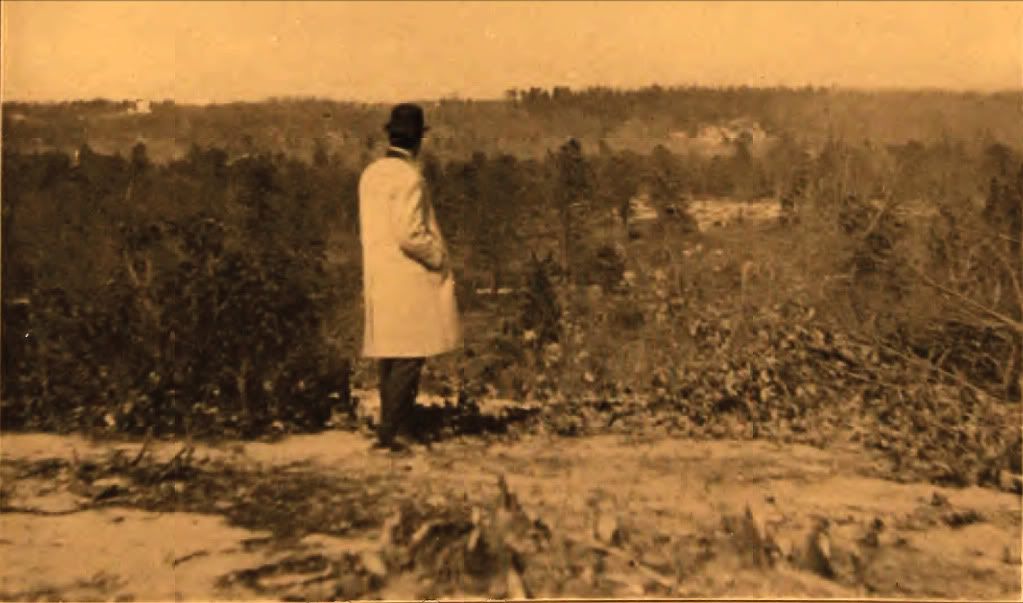David,
I meant your discussion with Jim was moot to me because the photo appeared to me to be pointed in the opposite direction. I wasn't trying to suggest it was moot to you or Jim. Carry on.
To assist, here is another view of the picture, somewhat cleaned up and maybe a little more clear.
If the picture is oriented toward the 2nd tee and first fairway locations, I'd be curious as to what field of view you think is covered. At the distance of the 2nd tee and 1st fairway locations, where is the left edge of the picture and where is the right edge? What do you see from the foreground to the middle of the picture? I see the land dropping steeply away from his feet and then more gently to the white line coming out of his right hip. From there it appears to me to rise gently and then steeply up the far hill. To me, that doesn't fit at all with the topography looking from the 3rd tee in that direction. The land should continue to drop another 20 feet over another 1000 feet past the RR. And, Lake Lekau should be out there somewhere in the right half of the picture, depending on the angle it is taken.
The 1913 topo shows a a falling away from the 3rd tee, more steep at the beginning and then uniformly from there to the teeing area. A modern picture (albeit from the opposite direction) shows a sharp ridge near the green and a flatter fairway (Jim and Patrick could tell us what it looks like on the ground). Old pictures of the ridge show it to be less abrupt - at least to me.
The caption reads as follows:
" PINE VALLEY.
The new course in New Jersey near Philadelphia. Looking over the rolling country from the third
teeing-ground. The ground is being cleared rapidly and the fairways and putting-greens prepared
for seeding."
The caption provides no hint as to what direction it is looking over "rolling country", so I suppose it could be looking toward the first, or the sixth or even across the 4th or across the short course.
To me the foreground doesn't match the topography of the land as I understand it. If somebody had a picture looking back down the 2nd that might help validate or not.


(from Robert Thompson's blog)
